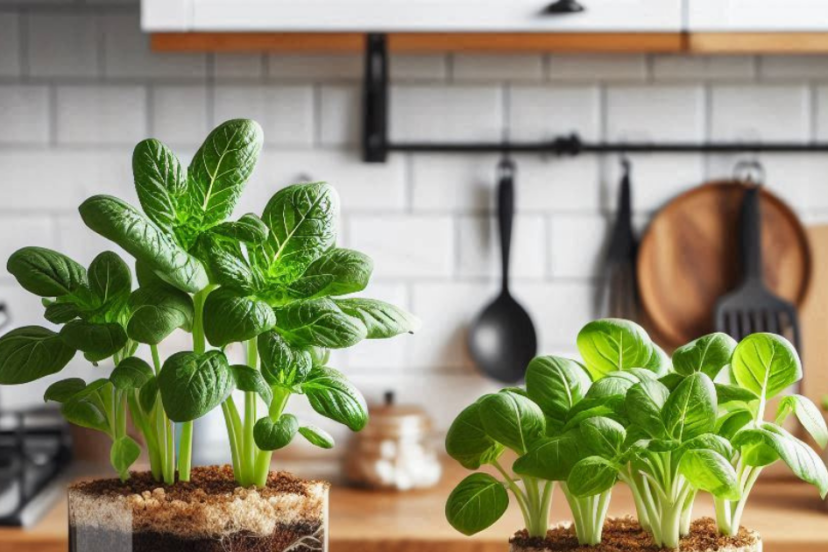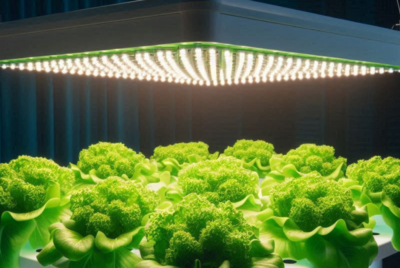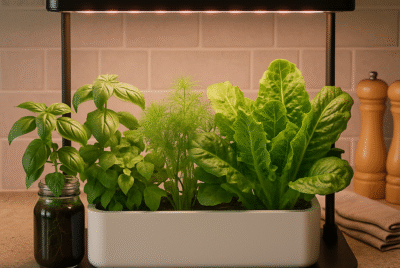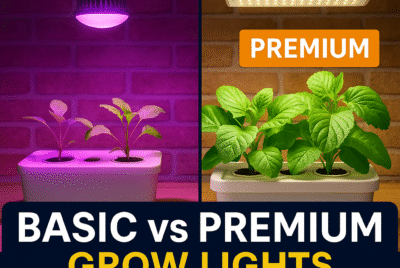Hydroponics vs Soil: A Gardener’s Perspective
Comparative Analysis: Hydroponics vs Soil
To help you decide which method suits your needs, let’s dive into a detailed comparative analysis of hydroponics and soil gardening.
Growth Rate Comparison
Hydroponics
In my experience, hydroponic plants grow significantly faster than their soil counterparts. This is because they receive nutrients directly from the water, allowing for more efficient uptake.
1. Controlled Nutrient Delivery: Nutrients in hydroponics are delivered directly to plant roots, ensuring optimal growth conditions.
2. Faster Germination: Seeds in hydroponic systems germinate faster due to the controlled environment.
3. Rapid Growth Cycles: Hydroponic systems support continuous growth cycles without seasonal interruptions.
4. Immediate Adjustments: Nutrient levels can be quickly adjusted to meet plant needs.
5. Consistent Growth: Plants in hydroponic systems experience consistent growth without fluctuations.
Soil Gardening
In soil gardening, plants often grow at a slower pace due to variable soil conditions and nutrient availability.
1. Natural Processes: Growth in soil gardening relies on natural nutrient cycles and soil health.
2. Seasonal Influences: Growth rates are influenced by seasonal changes and weather conditions.
3. Soil Quality: Variability in soil quality affects plant growth and development.
4. Microbial Activity: Soil microbial activity plays a key role in nutrient availability.
5. Environmental Factors: External factors like temperature and rainfall impact growth rates.
Yield Quality and Quantity
Hydroponics
Hydroponics often produces higher yields due to the precise control over growing conditions. Here are some reasons why:
1. Optimized Conditions: Hydroponic systems allow for precise control of nutrient delivery, light, temperature, and humidity, creating ideal conditions for plant growth.
2. Increased Density: Plants can be grown more densely because there is no competition for soil nutrients, maximizing yield per square foot.
3. Year-Round Production: Indoor hydroponics can operate year-round, unaffected by seasonal changes, ensuring continuous harvests.
4. Consistent Quality: The controlled environment leads to uniformity in plant size and quality, often superior to soil-grown counterparts.
5. Fewer Pests and Diseases: The reduction of soil-borne pests and diseases means healthier plants, contributing to higher and more consistent yields.
Soil Gardening
Soil gardening yields can be highly variable and are influenced by several factors:
1. Nutrient Variability: Soil nutrient levels can vary greatly, affecting plant growth and yield consistency.
2. Weather Dependence: Yields are subject to seasonal variations and weather conditions, which can cause fluctuations in production.
3. Soil Health: The health and fertility of the soil play a significant role in determining yield. Practices like crop rotation and organic amendments can enhance soil productivity.
4. Biodiversity Benefits: Soil ecosystems support a wide range of beneficial organisms that can enhance plant health and yields.
5. Space Requirements: Adequate space is needed for root expansion and plant development, which can limit the density of planting compared to hydroponics.
Nutrient Management: Hydroponics vs Soil
Hydroponics Nutrient Solutions
Managing nutrients in hydroponics is a precise science that requires careful attention:
1. Nutrient Solutions: Use high-quality, balanced nutrient solutions specifically formulated for hydroponics. Adjustments can be made based on the specific needs of the plants.
2. pH Monitoring: Regularly check and adjust the pH of the nutrient solution to maintain an optimal range (typically 5.5 to 6.5) for nutrient absorption.
3. EC Levels: Monitor electrical conductivity (EC) to ensure the nutrient concentration is within the appropriate range for the plants being grown.
4. Regular Feeding: Nutrient solutions should be replenished and adjusted regularly to avoid deficiencies or toxicities.
5. Supplemental Additives: Consider using additional supplements like calcium, magnesium, and trace minerals to support plant health.
Soil Nutrient Management
Nutrient management in soil gardening involves maintaining soil health and fertility:
1. Soil Testing: Conduct regular soil tests to determine nutrient levels and pH. This helps in making informed decisions about amendments and fertilizers.
2. Organic Matter: Add compost, manure, and other organic matter to improve soil structure, fertility, and microbial activity.
3. Fertilizers: Use balanced fertilizers based on soil test results to provide the necessary nutrients. Organic fertilizers are often preferred for their long-term benefits.
4. Crop Rotation: Rotate crops to prevent nutrient depletion and reduce the buildup of soil-borne diseases.
5. Mulching: Apply mulch to conserve soil moisture, suppress weeds, and gradually add organic nutrients as it decomposes.
Water Usage and Efficiency: Hydroponics vs Soil
Water Consumption in Hydroponics
Hydroponics is known for its water efficiency:
1. Recirculating Systems: Hydroponic systems typically recycle water, reducing overall consumption.
2. Minimal Evaporation: Indoor systems experience less water loss due to evaporation compared to outdoor soil gardens.
3. Targeted Watering: Water is delivered directly to the plant roots, minimizing wastage.
4. Water Saving Technologies: Techniques like drip irrigation and aeroponics enhance water efficiency.
5. Climate Control: Controlled environments reduce the need for excessive watering, optimizing water usage.
Water Usage in Soil Gardening
Water usage in soil gardening can be more intensive:
1. Evaporation Losses: Outdoor soil gardens lose a significant amount of water through evaporation, especially in hot climates.
2. Inefficient Irrigation: Traditional watering methods can be less efficient, leading to water wastage.
3. Soil Drainage: Poorly draining soils can lead to water logging and wastage.
4. Mulching: Use mulch to reduce evaporation and retain soil moisture.
5. Irrigation Systems: Implement efficient irrigation systems like drip or soaker hoses to reduce water consumption.
Space and Location Requirements: Hydroponics vs Soil
Space Efficiency of Hydroponics
Hydroponic systems are highly space-efficient, making them ideal for urban and indoor gardening:
1. Vertical Growing: Utilize vertical space with stackable or wall-mounted systems to maximize growing area.
2. Compact Layouts: Hydroponic setups can be designed to fit small spaces like balconies, kitchens, or even closets.
3. Indoor Gardening: Hydroponics allows for indoor gardening, making it possible to grow plants in apartments or homes without outdoor space.
4. Rooftop Gardens: Transform unused rooftop spaces into productive gardens with hydroponic systems.
5. Flexible Designs: Customizable systems can be tailored to fit available space and specific growing needs.
Space Needs for Soil Gardening
Soil gardening generally requires more space, especially for larger plants and root development:
1. Garden Beds: Traditional soil gardens need ample space for garden beds, which can limit urban gardening opportunities.
2. Root Space: Plants require sufficient root space for healthy growth, leading to larger garden areas.
3. Row Spacing: Proper spacing between plants and rows is necessary to prevent overcrowding and ensure adequate sunlight.
4. Expansion Limitations: Expanding a soil garden requires additional physical space, which may not always be available.
5. Community Gardens: For those with limited personal space, participating in community gardens can provide access to larger growing areas.
Environmental Impact
Sustainability of Hydroponics
Hydroponics can be a more sustainable option due to its resource efficiency:
1. Water Conservation: Recirculating water systems significantly reduce water usage compared to traditional soil gardening.
2. Reduced Pesticides: The controlled environment minimizes the need for pesticides and herbicides.
3. Urban Agriculture: Hydroponics supports urban agriculture, reducing the carbon footprint associated with transporting produce from rural farms to cities.
4. Energy Use: While hydroponics relies on electricity, integrating renewable energy sources like solar panels can offset this impact.
5. Waste Reduction: Precise nutrient delivery reduces fertilizer runoff and environmental contamination.
Environmental Effects of Soil Gardening
Soil gardening has a different set of environmental impacts:
1. Soil Health: Sustainable soil gardening practices enhance soil health and biodiversity, benefiting the ecosystem.
2. Carbon Sequestration: Healthy soils can sequester carbon, contributing to climate change mitigation.
3. Pesticide Use: Traditional soil gardening may require more pesticides, which can harm beneficial insects and pollute waterways.
4. Water Usage: Higher water consumption can strain local water resources, especially in arid regions.
5. Land Use: Large-scale soil gardening can lead to land degradation if not managed sustainably, impacting local ecosystems.
Cost Analysis: Hydroponics vs Soil
Initial Investment
Hydroponics
Setting up a hydroponic system often involves a higher initial investment:
1. System Setup: Purchasing or building hydroponic systems, including reservoirs, pumps, grow lights, and growing mediums, can be costly.
2. Equipment: High-quality equipment such as pH and EC meters, air pumps, and nutrient solutions add to the initial costs.
3. Infrastructure: Indoor hydroponic systems may require additional infrastructure, like shelving units and climate control systems.
4. Technology: Investing in automation technology for monitoring and adjusting conditions can further increase setup costs.
5. Training: Acquiring knowledge or training in hydroponics may involve costs for courses or consultation.
Soil Gardening
Soil gardening typically has a lower initial setup cost:
1. Basic Tools: Essential gardening tools like shovels, trowels, and watering cans are relatively inexpensive.
2. Soil and Seeds: Initial costs for soil, seeds, or seedlings are minimal compared to hydroponic systems.
3. Organic Matter: Utilizing homemade compost and organic amendments can reduce initial costs.
4. Local Resources: Many soil gardeners can source materials locally, reducing expenses.
5. Low-Tech Setup: Minimal technological requirements mean lower initial investments.
Ongoing Costs
Hydroponics
Ongoing expenses for hydroponics can be higher due to maintenance and operational costs:
1. Nutrient Solutions: Regularly replenishing nutrient solutions is an ongoing cost.
2. Electricity: Continuous operation of pumps, grow lights, and climate control systems can result in high electricity bills.
3. System Maintenance: Regular maintenance of equipment, including cleaning and replacing parts, incurs ongoing expenses.
4. Water Usage: Despite being efficient, hydroponics still requires a constant supply of water.
5. Consumables: Replacement of growing mediums, pH buffers, and other consumables adds to ongoing costs.
Soil Gardening
Soil gardening has lower ongoing costs, primarily associated with garden maintenance:
1. Soil Amendments: Periodic addition of compost, manure, and other soil amendments is required to maintain soil fertility.
2. Watering: Depending on the climate, watering can be a significant ongoing expense, especially in dry regions.
3. Pest Control: Organic or chemical pest control measures may incur costs.
4. Plant Rotation: Costs associated with buying new seeds or plants for crop rotation and seasonal changes.
5. Garden Maintenance: Regular maintenance tasks like weeding, pruning, and mulching require minimal ongoing expenses.
Practical Tips for Transitioning from Soil to Hydroponics: Hydroponics vs Soil
Start Small
Transitioning from soil to hydroponics can be overwhelming, so start with a small system:
1. Pilot System: Set up a small hydroponic system to understand the basics and get comfortable with the technology.
2. Simple Crops: Begin with easy-to-grow plants like lettuce or herbs to gain confidence.
3. Gradual Expansion: Expand your system gradually as you become more proficient.
4. Learn by Doing: Use the small setup to experiment and learn from any mistakes without risking a large investment.
5. Resource Management: Manage resources efficiently by starting small and scaling up based on your success.
Educate Yourself
Knowledge is key to a successful transition:
1. Research: Read books, articles, and online forums about hydroponics to build a solid foundation.
2. Workshops and Courses: Attend workshops or online courses to gain practical knowledge.
3. Mentorship: Seek advice from experienced hydroponic growers or join local gardening groups.
4. Continuous Learning: Stay updated with the latest trends and advancements in hydroponics.
5. Troubleshooting: Learn common troubleshooting techniques to quickly address any issues that arise.
Choose the Right System
Selecting the appropriate hydroponic system is crucial for success:
1. System Types: Research different types of hydroponic systems (e.g., NFT, DWC, drip systems) to find one that suits your needs.
2. Space Considerations: Choose a system that fits your available space and growing area.
3. Crop Selection: Consider the types of crops you want to grow and choose a system that supports their requirements.
4. Budget: Factor in your budget and choose a system that aligns with your financial constraints.
5. Ease of Use: Opt for a system that matches your skill level and technical expertise.
Monitor and Adjust
Regular monitoring and adjustments are vital for hydroponic success:
1. Routine Checks: Perform daily checks on your system to ensure everything is functioning correctly.
2. Nutrient Levels: Regularly test and adjust nutrient levels to meet the specific needs of your plants.
3. pH Levels: Monitor and maintain optimal pH levels for nutrient absorption.
4. Environmental Control: Keep a close eye on temperature, humidity, and light conditions, making adjustments as needed.
5. Data Logging: Maintain a log of your observations and adjustments to track progress and identify trends.
Stay Patient and Persistent
Transitioning from soil to hydroponics can be challenging, so patience and persistence are essential:
1. Expect Challenges: Be prepared for initial challenges and setbacks as you learn the ropes.
2. Learn from Mistakes: Use mistakes as learning opportunities to improve your skills.
3. Stay Committed: Stay committed to the process and give yourself time to adapt to the new system.
4. Celebrate Successes: Acknowledge and celebrate your successes, no matter how small, to stay motivated.
5. Seek Support: Reach out to the hydroponic community for support and encouragement when needed.
Conclusion: Hydroponics vs Soil
In the great debate of hydroponics vs. soil gardening, each method has its unique advantages and challenges. Hydroponics offers rapid growth, higher yields, and precise control, making it an excellent choice for urban gardeners and those seeking efficiency and innovation. However, it requires a significant initial investment, technical knowledge, and constant monitoring.
On the other hand, soil gardening connects you with nature, supports biodiversity, and is more cost-effective, especially for beginners. While it might not offer the rapid growth and high yields of hydroponics, it provides a traditional and rewarding gardening experience.
Ultimately, the best choice depends on your specific needs, resources, and gardening goals. Whether you choose the cutting-edge world of hydroponics or the time-honored tradition of soil gardening, both methods can yield delicious, homegrown produce and the satisfaction of nurturing plants from seed to harvest.
FAQs
1. Can I combine hydroponics and soil gardening?
Yes, many gardeners use a combination of both methods to take advantage of the benefits each offers. For example, you can grow fast-growing leafy greens in a hydroponic system and root vegetables or perennials in soil.
2. Is hydroponic produce healthier than soil-grown produce?
Both hydroponic and soil-grown produce can be equally nutritious. The nutrient content largely depends on the care and quality of the growing conditions, including nutrient management in hydroponics and soil health in traditional gardening.
3. How do I start with hydroponics if I have limited space?
Start with a compact hydroponic system designed for small spaces, such as vertical gardens or countertop units. These systems are ideal for growing herbs, lettuce, and other small plants indoors.
4. What are the most common problems in hydroponics?
Common issues include nutrient imbalances, pH fluctuations, equipment failures, algae growth, and waterborne diseases. Regular monitoring and maintenance can help prevent and address these problems.
5. Can I use organic nutrients in hydroponics?
Yes, there are organic nutrient solutions available for hydroponic systems. Ensure that they are specifically formulated for hydroponics to avoid clogging and other issues associated with traditional organic fertilizers.
By weighing the pros and cons and considering your personal preferences and resources, you can make an informed decision that suits your gardening style and objectives. Whether you dive into the innovative world of hydroponics or stick with the tried-and-true methods of soil gardening, the joy of growing your own food is a rewarding and fulfilling endeavor.
*We may earn a commission from purchases made through our links, at no cost to you. This does not affect our product recommendations. Please see our disclosure to learn more.




